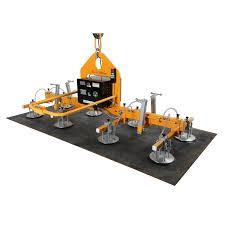Material handling under vacuum has become an essential process in various industries, from pharmaceuticals and food processing to automotive and electronics manufacturing. This technology provides a clean, efficient, and ergonomic way to lift, transfer, and position materials—especially where traditional mechanical or manual methods may fall short. However, like any industrial system, vacuum handling systems are not immune to technical issues.
When problems arise, they can affect production speed, operator safety, and even product integrity. Understanding how to troubleshoot common challenges in material handling under vacuum is crucial for maintaining uptime, reducing costs, and ensuring system longevity.
This article outlines the most frequent problems encountered in vacuum material handling systems and offers actionable solutions to help engineers, technicians, and facility managers resolve them effectively.
Understanding the Basics of Material Handling Under Vacuum
Before diving into troubleshooting, it's important to understand how vacuum material handling works. These systems typically consist of the following core components:
-
Vacuum generator (pump, ejector, or blower)
-
Suction cups or pads
-
Vacuum lines and filters
-
Control systems (valves, sensors, and PLCs)
-
Mechanical supports or lifters
The principle behind material handling under vacuum is simple: the system creates a pressure differential between the atmosphere and the surface being lifted. This allows the suction cups to hold onto the item firmly, enabling efficient lifting and moving operations without mechanical gripping.
When any part of this system underperforms or fails, it can cause a range of issues—from minor inefficiencies to complete system shutdowns.
Common Issues and Troubleshooting Strategies
1. Loss of Suction or Insufficient Vacuum Pressure
Symptoms:
-
Load drops unexpectedly
-
Suction cup fails to attach to the surface
-
Vacuum gauge reads below optimal levels
Possible Causes:
-
Air leaks in the system (damaged hoses, fittings, or seals)
-
Dirty or clogged filters
-
Worn-out or improperly sealed suction cups
-
Malfunctioning vacuum pump
Solutions:
-
Inspect all hoses and connections for cracks or loose fittings.
-
Replace or clean vacuum filters regularly to prevent airflow restriction.
-
Check suction cups for wear and ensure proper sealing on the product surface.
-
Test vacuum pump performance and replace components if necessary.
2. Inconsistent or Intermittent Lifting Performance
Symptoms:
-
Some loads lift correctly while others fail
-
Vacuum pump cycles irregularly
-
Unpredictable grip strength
Possible Causes:
-
Surface inconsistencies or porosity on lifted materials
-
Variable load weights exceeding system capacity
-
Improper control valve settings
-
Electrical or sensor malfunctions
Solutions:
-
Use specialized suction cups designed for porous or uneven surfaces.
-
Review system specifications and ensure load weight is within safe limits.
-
Calibrate and test control valves for consistent performance.
-
Inspect control circuits and sensors for accurate feedback signals.
3. System Not Releasing the Load
Symptoms:
-
Suction cups remain attached after lifting
-
Difficulty disengaging the load during placement
-
Delays in vacuum release response time
Possible Causes:
-
Malfunctioning or dirty release valves
-
Control logic errors
-
Vacuum not venting quickly enough
Solutions:
-
Clean or replace faulty release valves.
-
Check PLC logic or relay sequences to ensure correct timing of vacuum release.
-
Install quick-release valves or venturi systems for faster disengagement.
4. Overheating or Noise in the Vacuum Pump
Symptoms:
-
High temperatures in the pump unit
-
Excessive vibration or operational noise
-
Reduced suction over time
Possible Causes:
-
Continuous overload or operation beyond duty cycle
-
Lack of lubrication (for oil-lubricated pumps)
-
Worn-out bearings or impellers
Solutions:
-
Allow the pump to cool periodically if not rated for continuous operation.
-
Ensure the oil reservoir is filled and the correct type of oil is used.
-
Schedule preventive maintenance to replace worn mechanical parts.
5. Contamination or Product Damage
Symptoms:
-
Foreign particles in the vacuum line or on the product
-
Surface scratches or deformation of the material
-
Contamination of cleanroom environments
Possible Causes:
-
Inadequate filtration in the vacuum system
-
Suction cups made from incompatible materials
-
Overpressure or excessive suction force
Solutions:
-
Install high-efficiency filters to capture dust and debris.
-
Use material-appropriate suction cups (e.g., FDA-approved for food/pharma).
-
Adjust vacuum levels to suit delicate materials, avoiding over-application of pressure.
Preventive Maintenance Best Practices
The best way to reduce downtime and extend the life of your material handling under vacuum system is through routine maintenance. Below are key best practices:
-
Daily Inspections: Check hoses, suction cups, and gauges before each shift.
-
Weekly Cleaning: Remove dust and contaminants from filters and suction surfaces.
-
Monthly Testing: Measure vacuum levels under load and test system response times.
-
Quarterly Overhaul: Inspect the pump, replace worn parts, and recalibrate control systems.
-
Documentation: Maintain logs of inspections, repairs, and maintenance for compliance and trend analysis.
Choosing the Right Equipment for Reliability
Many issues in material handling under vacuum systems stem from using the wrong equipment for the application. When planning or upgrading your system, consider:
-
Load type, shape, and weight
-
Surface characteristics (porosity, curvature)
-
Cleanroom or contamination control requirements
-
Required lifting speed and cycle times
-
System integration with existing automation
Work with reputable suppliers or integrators who can help you select components tailored to your process needs.
Conclusion
While material handling under vacuum offers significant operational benefits, it requires attention to system design, regular maintenance, and swift troubleshooting when issues arise. Understanding common failure modes and how to resolve them helps maintain productivity, reduce downtime, and protect both workers and products.

